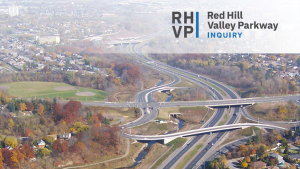LAS VEGAS — The U.S. Federal Highway Administration and the Georgia Department of Transportation are working with a non-profit agency called the Ray Project to develop innovative highway technology that will work better with autonomous vehicles than existing infrastructure.
The Ray Project is mandated to develop a “Smart Highway” that is safer and more efficient, explained a recent release. Projections show that connected and autonomous vehicles could help reduce crashes by 40 per cent or more but the full benefits of the technology won’t be realized until highway infrastructure is upgraded, said Allie Kelly, executive director of the Ray Project.
Tests are being undertaken on a 29-kilometre stretch of a Georgia interstate. The program is using solar energy, recycled tires, vehicle telematics data and roadside right-of-way spaces in an attempt to explore how highways can become more ecologically beneficial, while generating revenue.
“The goal that guides us is to use technologies that exist today to reduce carbon emissions and get to zero in terms of traffic fatalities,” said Kelly, who be speaking at the CONEXPO-CON/AGG conference in Las Vegas being held March 10 to 14.
“We believe the technologies exist and are evolving rapidly to allow that to happen. We are also working with government to diversify funding sources for transportation.”
The Ray has been working with 3M to install specialized striping for connected roads.
“It is the highest spec for wet-dry retro reflectivity for a human driver,” Kelly said in the release. “It is also highly visible to the computer vision systems of autonomous vehicles. It sounds simple, but proper lane lines are essential to the safe operation and deployment of autonomous vehicles.”
The Ray team is also working with Panasonic to build a data management system for connected vehicle data streams.
“We are deploying radios along the roadside,” Kelly explained. “Additionally, the Georgia DOT is deploying thousands of radios in the metro Atlanta area. Those radios can hear the data packet being traded between vehicles on The Ray. Some of this data is really interesting.”
The data has the potential to help develop safer highways, the group believes. For example: numerous vehicles activate their wipers at a certain time. Several vehicles report loss of traction. A couple of vehicles report an air bag deployment, which suggests a collision. This data could help first responders respond more quickly while also helping DOT officials warn other drivers and reroute them if necessary.
“The transportation data stream is equal to 15,000 years of television content,” Kelly said. “That is why we need infrastructure to make the most of this technology. Big data means nothing without a brain (data management system) to make sense of it.”
The Ray is also testing a tire safety station. A product called WheelRight analyzes tire pressure, tread depth and tire damage in less than 10 seconds, with no human interaction.
“Every year we waste 2 billion gallons of gasoline driving cars with improperly inflated tires,” Kelly said.
Additionally, poor tire maintenance can lead to crashes. Products like WheelRight, when deployed along the highway, could help drivers stay on top of tire maintenance, stated the release.







Recent Comments